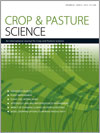CP14007Predicting the future of plant breeding: complementing empirical evaluation with genetic prediction
Recent technology advances in genomics, high-throughput genotyping, trait phenotyping, quantitative genetics and modelling methodologies have enabled implementation of molecular-enhanced plant breeding strategies. The commercial sector has adopted these technologies and it is iteratively refining and optimising their application to increase the scale and efficiency of plant breeding programs for a range of crops. We review examples from commercial maize breeding and discuss further advances we expect to see developed and adopted in the near future.




